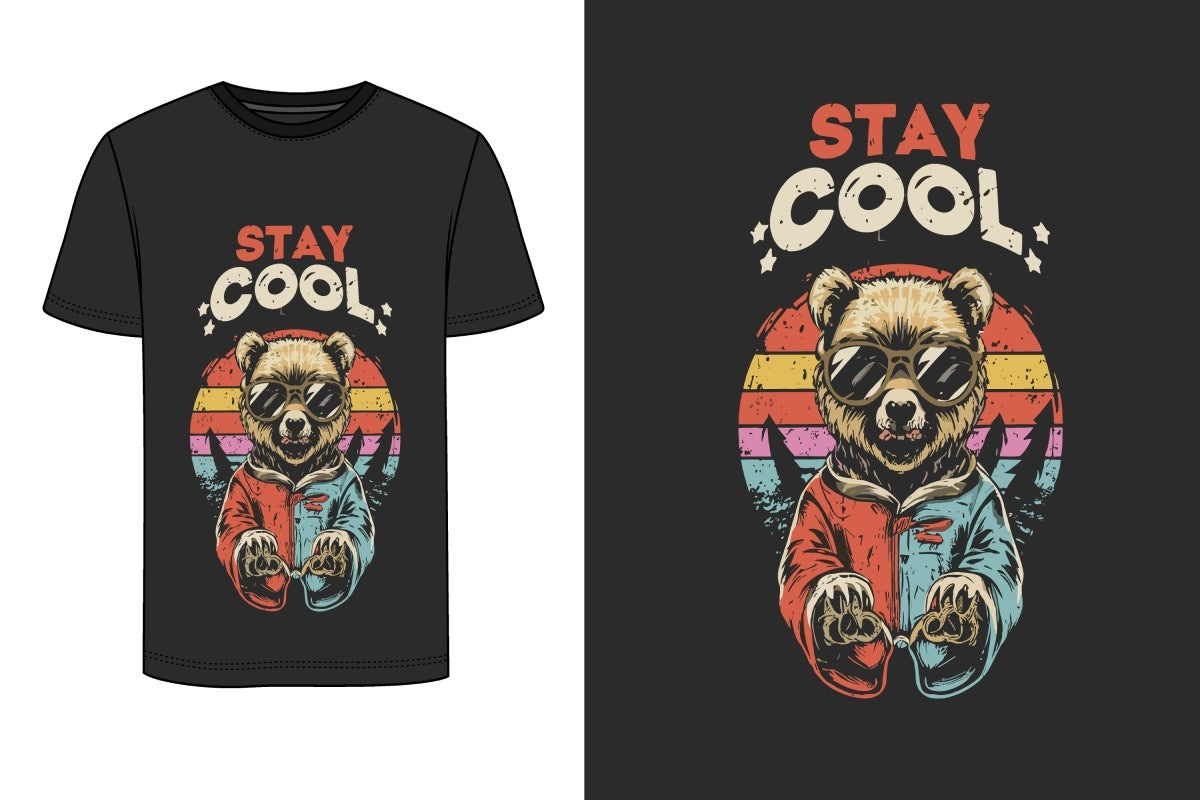
DTF Transfer vs Heat Transfer: Key Facts
Understanding the Differences Between DTF Transfer and Heat Transfer
Both DTF transfer and heat transfer are popular printing methods used in garment customization, but they operate differently. DTF printing involves printing a design onto a PET film, applying adhesive powder, curing the ink, and then transferring the design onto fabric using a heat press. Heat transfer, on the other hand, typically refers to vinyl cutting, screen print transfers, or sublimation, where designs are cut or printed onto transfer sheets before being applied to garments. Choosing between DTF transfer and heat transfer depends on factors such as durability, fabric compatibility, and production efficiency.
How DTF Transfer and Heat Transfer Work
In DTF transfer printing, a special printer deposits ink onto a film, which is then coated with adhesive powder. Once cured, the design is heat-pressed onto fabric, ensuring a strong bond. Heat transfer, in contrast, involves cutting vinyl or printing onto a special transfer sheet, which is then applied to the fabric using a heat press. While both methods require heat application, DTF printing allows for more detailed, full-color designs compared to traditional heat transfer techniques.
Durability: Which Method Lasts Longer?
One of the biggest advantages of DTF transfer is its durability. The prints bond directly with the fabric fibers, making them resistant to washing, cracking, and peeling. Heat transfer prints, especially those using vinyl, may start to peel or fade over time due to washing and fabric stretching. DTF prints maintain their flexibility and color vibrancy longer, making them a more durable option for frequent-use garments.
Fabric Compatibility: What Works Best?
When it comes to fabric compatibility, DTF transfer offers greater versatility. It can be applied to cotton, polyester, blends, denim, and even leather. Heat transfer methods, such as sublimation, only work effectively on polyester, while vinyl heat transfers may not adhere well to all fabrics. If the goal is to print on a wide range of materials, DTF is the more flexible choice.
Color and Design Capabilities
For multi-color or gradient designs, DTF transfer is the superior choice. It allows for high-resolution prints with no color limitations. Heat transfer vinyl, however, is restricted to solid colors and requires layering for multi-color prints. If detailed graphics, shading, or photorealistic prints are needed, DTF is the better option over traditional heat transfer methods.
Production Speed and Efficiency
In terms of production speed, DTF transfer is faster for large-scale printing. The process requires fewer manual steps compared to cutting and weeding vinyl for heat transfer. Additionally, DTF allows for bulk printing, making it ideal for businesses handling high-volume orders. Heat transfer, however, may be more suitable for small-scale projects that require simple designs and quick applications.
Cost Considerations: Which Method is More Affordable?
Initial investment costs for DTF transfer printing are higher due to the need for specialized printers, PET films, and curing equipment. However, in the long run, DTF is more cost-effective for bulk production as it reduces labor-intensive tasks. Heat transfer vinyl is more affordable for small businesses or DIY printing but becomes time-consuming for large-scale orders. The cost-effectiveness of each method depends on the scale of production and business needs.
Best Use Cases for DTF Transfer and Heat Transfer
DTF transfer printing is ideal for businesses that require high-quality, full-color prints on various fabrics. It is suitable for custom t-shirts, hoodies, promotional apparel, and detailed designs. Heat transfer is best for simple logos, names, and text-based designs on garments like sports jerseys and team uniforms. Evaluating the printing needs helps determine which method is the most practical choice.
Conclusion
While both DTF transfer and heat transfer offer reliable printing solutions, they serve different purposes. DTF is a superior choice for multi-color, high-detail prints with long-lasting durability, while heat transfer works well for simple, low-cost designs. Considering fabric compatibility, production speed, and design complexity helps businesses choose the best printing method for their needs. By understanding the key differences, DTF transfer users can make informed decisions for professional and long-lasting prints.
FAQ
- What is the main difference between DTF transfer and heat transfer?
- DTF transfer uses a printed film with adhesive, while heat transfer typically involves vinyl cutting or sublimation.
- Which method lasts longer on fabric?
- DTF prints are more durable, resisting cracking and peeling better than heat transfer vinyl.
- Can DTF transfer be applied to any fabric?
- Yes, DTF transfer works on cotton, polyester, blends, denim, and even leather.
- Is heat transfer better for single-color designs?
- Yes, heat transfer vinyl is ideal for solid-colored logos and simple text designs.
- Which method is more cost-effective?
- For bulk orders, DTF transfer is more cost-effective, while heat transfer is better for small-scale projects.
- Do I need special equipment for DTF printing?
- Yes, DTF printing requires a specialized printer, PET film, adhesive powder, and a curing unit.
- Can I achieve photorealistic prints with heat transfer?
- No, DTF transfer is the better option for detailed, high-resolution images with full-color shading.
- Does heat transfer work well on dark fabrics?
- Only if using special vinyl or opaque transfer sheets, whereas DTF works on all fabric colors.
- Which method is faster for bulk production?
- DTF transfer is faster because it eliminates the need for cutting and weeding like vinyl heat transfer.
- Can I use an iron for DTF or heat transfer?
- Heat transfer vinyl can be applied with an iron, but DTF requires a heat press for proper adhesion.